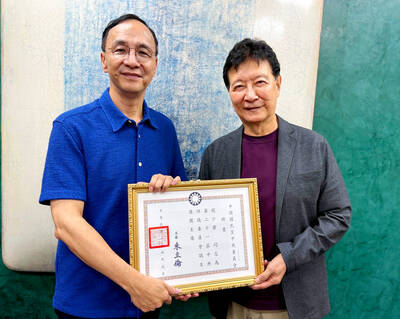What drink goes well with mini octopus and Thai vermicelli salad? How about an ice-cold Traveller's Wheat beer, spiced with tamarind, ginger and a pinch of lemongrass and Chinese orange peel?
The surprisingly refreshing brew is the star of a trio of craft beers recently introduced by Archipelago Brewing and brewed specifically to complement the unique flavors of Southeast Asian cuisine.
“It's not just that the beer goes well with the food, which it does, but there's an integral link in the ingredient to the food,” said Archipelago managing director Andrea Teo. “These are beers to match Asian lifestyle and Asian food.”
Teo came up with the idea for Asian-spiced beers while heading the innovations department at Asia Pacific Breweries, Singapore's largest industrial brewery. In May, 2005, she recruited American brewmaster Fal Allen, who honed his skills in Seattle and Northern California.
She outlined the concept, introduced him to the spices and tasted the test batches, giving advice that helped Allen adjust the recipes until they were ready to sell their products: Traveller's Wheat, Trader's Brown Ale and Straits Pale.
Archipelago, a business of Asia Pacific Breweries, opened its first pub in July in a popular bar district near the Singapore River. Its rough decor evokes 19th century adventure, with parchment map menus, coconut husk lamps, dark wood furnishings and cement floor with embedded wooden planks. Floor-to-ceiling windows open on an outdoor seating area.
Allen's 300-liter microbrewery takes prominent place behind the bar, and he plans to occasionally do onsite brewing.
On a recent warm afternoon, the bar was half full of young professionals, the majority of them drinking one of the three house draft specialties, though other local and imported beers are available.
Teo said Archipelago's target market is beer aficionados who want a new experience, business executives who drink socially and opinion leaders among university students.
“Singaporeans used to have just four words for beer: cold, fresh, local, imported,” Teo said. “But we could see the market demand coming up, the increasing sophistication of the Singapore market.”
Allen has spent hours shopping, tasting, chopping and sweating over the new brews. He does most of the work himself, including chopping the spices by hand until recently investing in a food processor.
He talks enthusiastically about the project, recalling his hunt for spices and his excitement at using tamarind in a beer. Already familiar with beer-food pairing, Allen was eager to try the fusion of Asian cooking and European brewing.
“Singaporeans are crazy about food. They are makan mad,” he said, using the Malay word for “eating.”
The Archipelago menu makes its objective clear. Food items are accompanied by logos advising which beer would taste best with that selection.
Trader's Brown Ale, a strong brew with coconut palm sugar and ginger, is paired with chicken masala or pear and citrus cream spring rolls, for example. Texas wings are best enjoyed with the smoother Straits Pale.
Finding the right pairs is an expanding process. Allen said the team periodically sits down with several plates of foods and several glasses of beer and tries to match the flavors.
“We thought beef rendang” — a spicy Malaysian dish — “would go perfectly with Traveller's Wheat,” he said, then shook his head.
“But rendang is sweet and spicy versus the sour and spicy of the beer.” The coconut palm sugar in Trader's Brown Ale turned out to be an ideal match.
Teo and Allen said they want to suggest the right pairings so customers don't make bad choices.
“If people have a bad reaction, it might turn them off the beer,” Allen said. “We want to make sure people get good pairings, not bad ones. And good beer, not bad beer.”
The Archipelago beers sell for 9.80 Singapore dollars (US$6.25) for 330ml, a dollar (US$0.64) more than local beers and about two dollars (US$1.28) less than imports.
Teo recognizes the new beers are an acquired taste but believes customers will come around.
“They're a bit more robust than you're maybe used to. They have more character,” she said. “But we don't intend to become a big brand. It's a niche market.”

Next week, candidates will officially register to run for chair of the Chinese Nationalist Party (KMT). By the end of Friday, we will know who has registered for the Oct. 18 election. The number of declared candidates has been fluctuating daily. Some candidates registering may be disqualified, so the final list may be in flux for weeks. The list of likely candidates ranges from deep blue to deeper blue to deepest blue, bordering on red (pro-Chinese Communist Party, CCP). Unless current Chairman Eric Chu (朱立倫) can be convinced to run for re-election, the party looks likely to shift towards more hardline

Enter the Dragon 13 will bring Taiwan’s first taste of Dirty Boxing Sunday at Taipei Gymnasium, one highlight of a mixed-rules card blending new formats with traditional MMA. The undercard starts at 10:30am, with the main card beginning at 4pm. Tickets are NT$1,200. Dirty Boxing is a US-born ruleset popularized by fighters Mike Perry and Jon Jones as an alternative to boxing. The format has gained traction overseas, with its inaugural championship streamed free to millions on YouTube, Facebook and Instagram. Taiwan’s version allows punches and elbows with clinch striking, but bans kicks, knees and takedowns. The rules are stricter than the

Sept. 15 to Sept. 21 A Bhutanese princess caught at Taoyuan Airport with 22 rhino horns — worth about NT$31 million today — might have been just another curious front-page story. But the Sept. 17, 1993 incident came at a sensitive moment. Taiwan, dubbed “Die-wan” by the British conservationist group Environmental Investigation Agency (EIA), was under international fire for being a major hub for rhino horn. Just 10 days earlier, US secretary of the interior Bruce Babbitt had recommended sanctions against Taiwan for its “failure to end its participation in rhinoceros horn trade.” Even though Taiwan had restricted imports since 1985 and enacted

“Far from being a rock or island … it turns out that the best metaphor to describe the human body is ‘sponge.’ We’re permeable,” write Rick Smith and Bruce Lourie in their book Slow Death By Rubber Duck: The Secret Danger of Everyday Things. While the permeability of our cells is key to being alive, it also means we absorb more potentially harmful substances than we realize. Studies have found a number of chemical residues in human breast milk, urine and water systems. Many of them are endocrine disruptors, which can interfere with the body’s natural hormones. “They can mimic, block